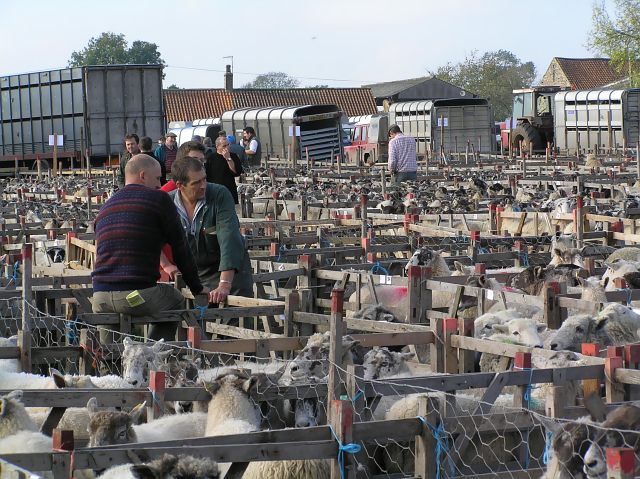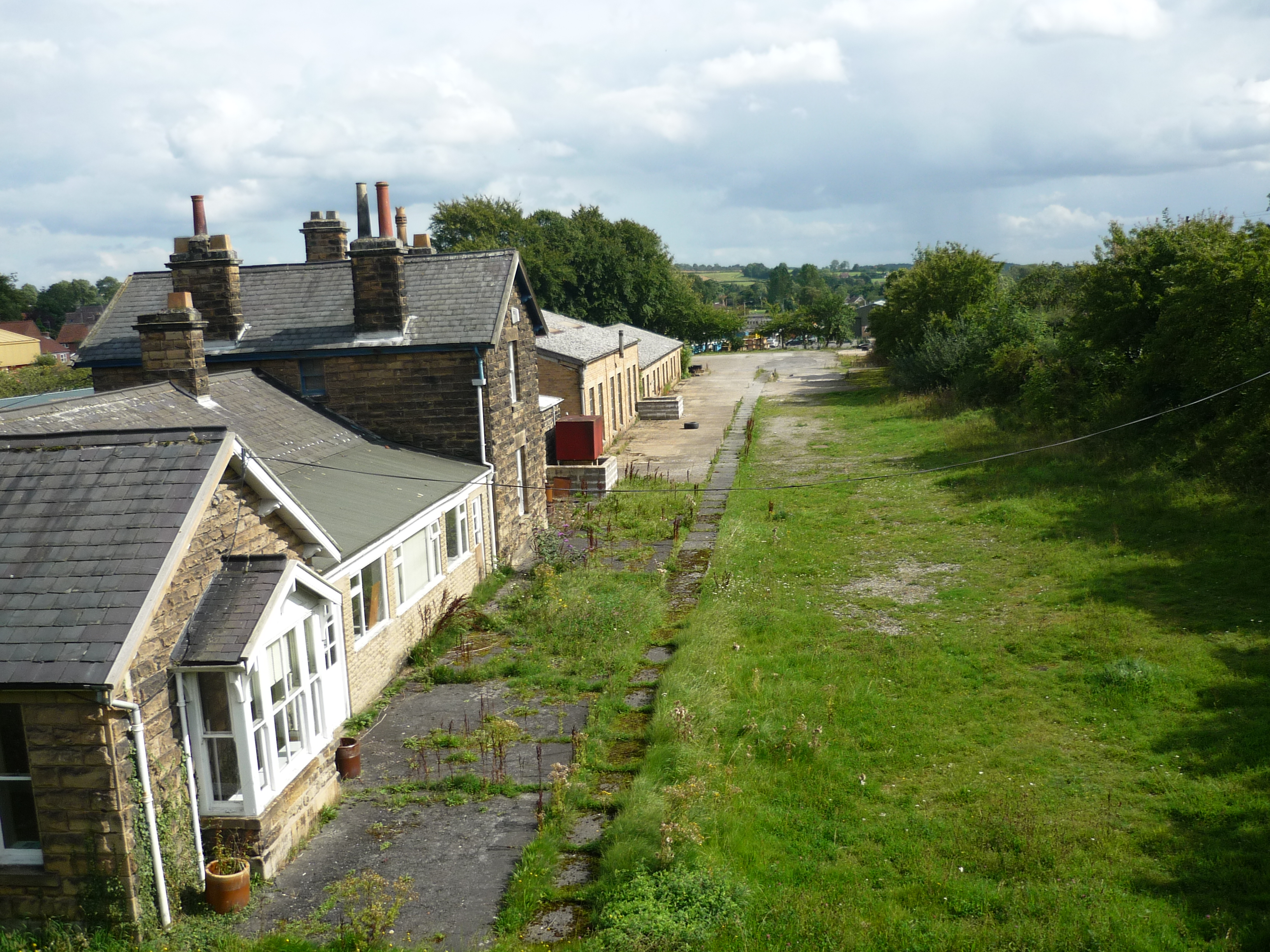|
Fadmoor
Fadmoor is a village and civil parish in the Ryedale district of North Yorkshire, England. It is on the border of the North York Moors and north of Kirkbymoorside. The name Fadmoor comes from Old English Old English (, ), or Anglo-Saxon, is the earliest recorded form of the English language, spoken in England and southern and eastern Scotland in the early Middle Ages. It was brought to Great Britain by Anglo-Saxon settlement of Britain, Anglo ... and means ''moor of a man called Fadda''. References External links Villages in North Yorkshire Civil parishes in North Yorkshire {{ryedale-geo-stub ... [...More Info...] [...Related Items...] OR: [Wikipedia] [Google] [Baidu] |
Ryedale
Ryedale is a non-metropolitan district in North Yorkshire, England. It is in the Vale of Pickering, a low-lying flat area of land drained by the River Derwent. The Vale's landscape is rural with scattered villages and towns. It has been inhabited continuously from the Mesolithic period. The economy is largely agricultural with light industry and tourism playing an increasing role. Towns include Helmsley, Kirkbymoorside, Malton, Norton-on-Derwent, and Pickering. Part of Ryedale lies within the North York Moors National Park. The A64 passes through Ryedale and villages such as Rillington. In the 2011 Census, the population of this primarily rural area of 150,659 hectares, the largest district in North Yorkshire, was 51,700. Derivation of name The name refers to the River Rye and was previously used for the Ryedale wapentake of Yorkshire, which covered roughly the same area. The current district was formed on 1 April 1974, under the Local Government Act 1972, and was a m ... [...More Info...] [...Related Items...] OR: [Wikipedia] [Google] [Baidu] |
North Yorkshire
North Yorkshire is the largest ceremonial county (lieutenancy area) in England, covering an area of . Around 40% of the county is covered by national parks, including most of the Yorkshire Dales and the North York Moors. It is one of four counties in England to hold the name Yorkshire; the three other counties are the East Riding of Yorkshire, South Yorkshire and West Yorkshire. North Yorkshire may also refer to a non-metropolitan county, which covers most of the ceremonial county's area () and population (a mid-2016 estimate by the ONS of 602,300), and is administered by North Yorkshire County Council. The non-metropolitan county does not include four areas of the ceremonial county: the City of York, Middlesbrough, Redcar and Cleveland and the southern part of the Borough of Stockton-on-Tees, which are all administered by unitary authorities. The non-metropolitan county and the City of York are within the Yorkshire and the Humber region. Middlesbrough, Redcar ... [...More Info...] [...Related Items...] OR: [Wikipedia] [Google] [Baidu] |
Thirsk And Malton (UK Parliament Constituency)
Thirsk and Malton is a constituency in North Yorkshire represented in the House of Commons of the UK Parliament since 2015 by Kevin Hollinrake, a Conservative Party (UK), Conservative. History 2010-date Anne McIntosh, a Conservative, elected for Vale of York in 1997 then in Thirsk and Malton in 2010, having defeated fellow MP John Greenway (MP), John Greenway in the selection, qualified as an advocate and worked for six years as political adviser to the European Democrats group in Brussels, then won election as an Member of the European Parliament, MEP for two terms, since 2010 she chaired the Environment, Food and Rural Affairs Select Committee. In 2014 she was deselected as the Conservative candidate. In 2015, Kevin Hollinrake was elected as MP. Political history Traditionally a safe seat, safe Conservative seat, the main forerunner, Ryedale (abolished in 2010) was taken by Elizabeth Shields for the Liberal Party (UK), Liberal Party, following a 1986 Ryedale by-electio ... [...More Info...] [...Related Items...] OR: [Wikipedia] [Google] [Baidu] |
Ryedale (UK Parliament Constituency)
Ryedale was a constituency in North Yorkshire represented in the House of Commons of the United Kingdom, House of Commons of the Parliament of the United Kingdom. It elected one Member of Parliament (United Kingdom), Member of Parliament (MP) by the first past the post system of election. It was created in 1983 United Kingdom general election, 1983 and abolished in 2010 United Kingdom general election, 2010. History This was traditionally a safe Conservative seat, although it was briefly taken by Elizabeth Shields for the Liberal Party (UK), Liberal Party, following a 1986 Ryedale by-election, by-election in 1986 held following the death of MP John Spence (politician), John Spence. Boundaries 1983–1997: The District of Ryedale wards of Amotherby, Ampleforth, Birdsall, Clifton Without, Dales, Ebberston, Haxby North East, Haxby West, Helmsley, Hovingham, Huntington North, Huntington South, Kirby Misperton, Kirkbymoorside, Malton, New Earswick, Norton, Pickering, Rawcliffe, Rill ... [...More Info...] [...Related Items...] OR: [Wikipedia] [Google] [Baidu] |
Civil Parish
In England, a civil parish is a type of Parish (administrative division), administrative parish used for Local government in England, local government. It is a territorial designation which is the lowest tier of local government below districts of England, districts and metropolitan and non-metropolitan counties of England, counties, or their combined form, the Unitary authorities of England, unitary authority. Civil parishes can trace their origin to the ancient system of Parish (Church of England), ecclesiastical parishes, which historically played a role in both secular and religious administration. Civil and religious parishes were formally differentiated in the 19th century and are now entirely separate. Civil parishes in their modern form came into being through the Local Government Act 1894, which established elected Parish councils in England, parish councils to take on the secular functions of the vestry, parish vestry. A civil parish can range in size from a sparsely ... [...More Info...] [...Related Items...] OR: [Wikipedia] [Google] [Baidu] |
North York Moors
The North York Moors is an upland area in north-eastern Yorkshire, England. It contains one of the largest expanses of heather moorland in the United Kingdom. The area was designated as a National Park in 1952, through the National Parks and Access to the Countryside Act 1949. Covering an area of , the National Park has a population of 23,380. It is administered by the North York Moors National Park Authority, whose head office is based in Helmsley. Location and transport To the east the area is clearly defined by the impressive cliffs of the North Sea coast. The northern and western boundaries are defined by the steep scarp slopes of the Cleveland Hills edging the Tees lowlands and the Hambleton Hills above the Vale of Mowbray. To the south lies the broken line of the Tabular Hills and the Vale of Pickering. Four roads cross the North York Moors from north to south. In the east the A171 joins Whitby and Scarborough. Further inland, the A169 runs between Pickering an ... [...More Info...] [...Related Items...] OR: [Wikipedia] [Google] [Baidu] |
Kirkbymoorside
Kirkbymoorside () is a market town and civil parish in the Ryedale district in North Yorkshire, England. It is north of York, It is also midway between Pickering and Helmsley, on the edge of the North York Moors National Park. It had a population of 3,040 in the 2011 census. History Kirkbymoorside is noted as ''Chirchebi'' in the Domesday Book of 1086. It has served as a trading hub at least since 1254, when it became a market town. There are two ancient coaching inns extant, the ''Black Swan'' with its carved porch, and the cruck-framed ''George and Dragon'', which originated in the 13th century. The Georgian façades point to later periods of commercial prosperity on the coaching route between York and Scarborough. Some Ancient British, Viking and Anglo-Saxon remains have been found in the vicinity. The Norman baron Robert de Stuteville built a wooden moated castle on Vivers Hill. The estate passed to the Wake family in the 13th century, who brought prosperity to the tow ... [...More Info...] [...Related Items...] OR: [Wikipedia] [Google] [Baidu] |
Old English
Old English (, ), or Anglo-Saxon, is the earliest recorded form of the English language, spoken in England and southern and eastern Scotland in the early Middle Ages In the history of Europe, the Middle Ages or medieval period lasted approximately from the late 5th to the late 15th centuries, similar to the post-classical period of global history. It began with the fall of the Western Roman Empire .... It was brought to Great Britain by Anglo-Saxon settlement of Britain, Anglo-Saxon settlers in the mid-5th century, and the first Old English literature, Old English literary works date from the mid-7th century. After the Norman conquest of 1066, English was replaced, for a time, by Anglo-Norman language, Anglo-Norman (a langues d'oïl, relative of French) as the language of the upper classes. This is regarded as marking the end of the Old English era, since during this period the English language was heavily influenced by Anglo-Norman, developing into a phase know ... [...More Info...] [...Related Items...] OR: [Wikipedia] [Google] [Baidu] |
Sheep Sale At Fadmoor
Sheep or domestic sheep (''Ovis aries'') are domesticated, ruminant mammals typically kept as livestock. Although the term ''sheep'' can apply to other species in the genus ''Ovis'', in everyday usage it almost always refers to domesticated sheep. Like all ruminants, sheep are members of the order Artiodactyla, the even-toed ungulates. Numbering a little over one billion, domestic sheep are also the most numerous species of sheep. An adult female is referred to as a ''ewe'' (), an intact male as a ''ram'', occasionally a ''tup'', a castrated male as a ''wether'', and a young sheep as a ''lamb''. Sheep are most likely descended from the wild mouflon of Europe and Asia, with Iran being a geographic envelope of the domestication center. One of the earliest animals to be domesticated for agricultural purposes, sheep are raised for fleeces, meat (lamb, hogget or mutton) and milk. A sheep's wool is the most widely used animal fiber, and is usually harvested by shearing. In Comm ... [...More Info...] [...Related Items...] OR: [Wikipedia] [Google] [Baidu] |
Villages In North Yorkshire
A village is a clustered human settlement or community, larger than a hamlet but smaller than a town (although the word is often used to describe both hamlets and smaller towns), with a population typically ranging from a few hundred to a few thousand. Though villages are often located in rural areas, the term urban village is also applied to certain urban neighborhoods. Villages are normally permanent, with fixed dwellings; however, transient villages can occur. Further, the dwellings of a village are fairly close to one another, not scattered broadly over the landscape, as a dispersed settlement. In the past, villages were a usual form of community for societies that practice subsistence agriculture, and also for some non-agricultural societies. In Great Britain, a hamlet earned the right to be called a village when it built a church. [...More Info...] [...Related Items...] OR: [Wikipedia] [Google] [Baidu] |





